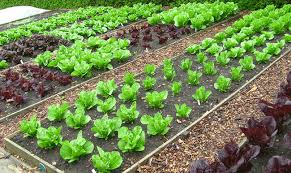Scientific Name: Cornus spp.
Common Name: Dogwood
Origin: Native to temperate regions of the Northern Hemisphere
Cultivation Guide for Dogwood Trees
Dogwood trees are beloved for their beautiful spring blossoms, attractive foliage, and vibrant fall colors. This guide will provide comprehensive tips on how to cultivate dogwood trees successfully in your home garden.
Read more related: Birch Tree
Assessing Your Space
Size of Your Garden
Dogwood trees come in various sizes. Some species, like the flowering dogwood (Cornus florida), can grow up to 20-40 feet tall, while others, like the Cornelian cherry (Cornus mas), remain smaller.
Sunlight:
Dogwoods prefer partial shade to full sun. In hotter climates, they benefit from some afternoon shade to prevent leaf scorch.
Soil Quality:
Dogwoods thrive in well-drained, loamy soils. They prefer slightly acidic soils with a pH between 5.5 and 6.5.
Choosing the Right Dogwood Tree
Climate Compatibility:Select a dogwood species suited to your climate. The flowering dogwood is hardy in USDA zones 5-9, while the kousa dogwood (Cornus kousa) can tolerate colder zones 4-8.
Purpose:
Consider your goals: ornamental beauty or fruit production. Ornamental dogwoods are known for their blossoms, while the Cornelian cherry produces edible fruit.
Growth Rate and Mature Size:
Dogwoods have moderate growth rates. They generally take several years to reach full maturity but offer long-lasting beauty.
Maintenance Needs:
Dogwoods require regular maintenance, including pruning, watering, and pest management, to ensure healthy growth and flowering.
Designing Your Layout
Spacing:
Plant dogwoods at least 15-20 feet apart to allow for their canopy and root system expansion.
Layering:
Consider planting smaller shrubs or groundcovers around the base of your dogwood tree to create a layered, visually appealing landscape.
Companion Planting:
Dogwoods can coexist with plants that prefer similar soil and light conditions. Avoid planting aggressive root systems nearby to prevent competition.
Planting Your Dogwood Tree
Preparing the Soil:
Clear the planting area of weeds and debris. Amend the soil with organic matter like compost to enhance fertility and structure.
Digging the Hole:
Dig a hole twice the width of the root ball and as deep as the root ball’s height. This allows roots to spread easily and encourages healthy growth.
Planting the Tree:
Gently remove the tree from its container. Place the tree in the hole, ensuring the root flare is level with the ground surface.
Backfill with soil, tamping down gently to eliminate air pockets. Water thoroughly to help settle the soil.
Mulching:
Apply a 2-4 inch layer of mulch around the base of the tree, keeping it away from the trunk. Mulch helps retain moisture, regulate soil temperature, and suppress weeds.
Initial Care
Watering:
Newly planted dogwoods need regular watering. Water deeply and consistently, especially during dry periods. The soil should remain moist but not waterlogged.
Staking:
If necessary, stake the tree to provide support until the roots are established. Use soft ties to avoid damaging the trunk.
Protection:
Protect young trees from pests and harsh weather conditions using tree guards or fencing if necessary.
Long-Term Care and Maintenance
Watering:
Continue to water young trees regularly. Mature dogwoods typically require less frequent watering but may need extra during prolonged dry spells.
Pruning:
Prune to remove dead, diseased, or damaged branches and to shape the tree. Pruning is best done in late winter or early spring before new growth begins.
Fertilizing:
Conduct soil tests to determine nutrient needs. Fertilize in early spring with a balanced, slow-release fertilizer if necessary. Organic options like compost or well-rotted manure are also beneficial.
Pest and Disease Management:
Common pests include dogwood borers and aphids. Diseases can include dogwood anthracnose and powdery mildew. Regular monitoring and early intervention with appropriate treatments are crucial.
Mulching and Weeding:
Maintain a mulch layer to conserve moisture and control weeds. Replenish mulch as needed, keeping it away from the trunk to prevent rot.
Benefits of Dogwood Trees in Your Home Garden
Environmental Benefits:
Dogwoods improve air quality by absorbing pollutants and releasing oxygen. They also provide habitat for various wildlife species.
Aesthetic and Functional Benefits:
Dogwood trees offer stunning seasonal beauty, particularly in spring when they bloom. They provide shade and, in the case of fruiting varieties, edible berries.
Personal and Community Benefits:
Dogwood trees can enhance property value and provide a serene and attractive environment. They also contribute to mental well-being by creating a calming, green space.
Conclusion
Cultivating dogwood trees in your home garden is a rewarding experience that offers numerous benefits. By carefully selecting the right species, preparing the soil, and providing proper care, you can enjoy the beauty and utility of dogwoods for many years. Consult local experts and resources to ensure successful cultivation tailored to your specific region and tree species.


3 thoughts on “Cultivation Guide of Dogwood Tree in Home Garden”